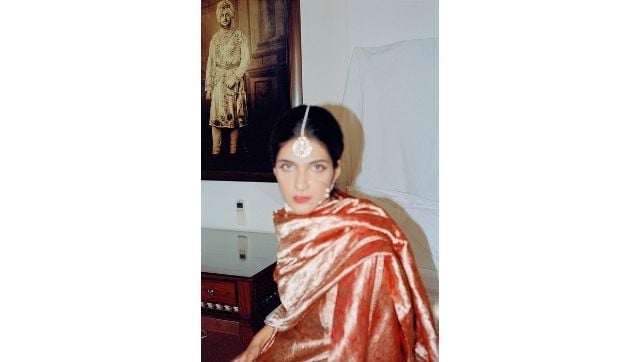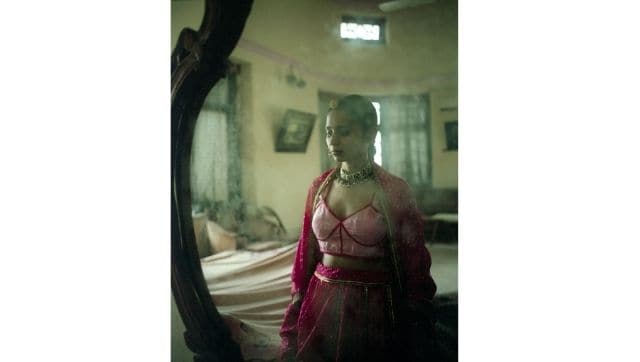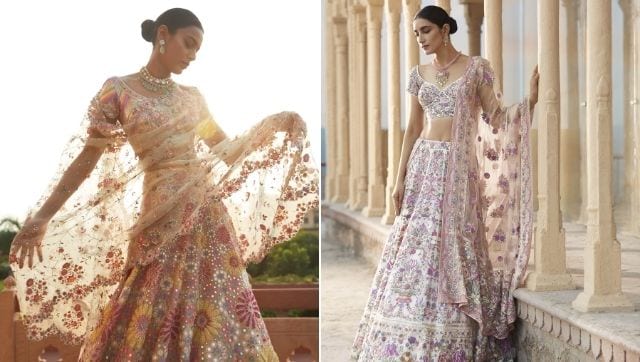The tidal wave of Zoom weddings has abated, and some predict that the Indian wedding industry, estimated to be worth $50 billion by a KPMG report in 2017, will reach 35 percent of pre-COVID 19 levels in 2021.
When the orders first started trickling in at Anita Dongre — three months after a lockdown was first announced in March 2020 — an unprecedented spell of complete operational paralysis came to an end. “The orders were all for lehengas,” says the eponymous designer, “from brides who just couldn’t wait anymore”. Enquiries for bridal-wear, which normally accounts for 40 percent of the brand, began popping up on Instagram and the brand’s website. They expanded their e-commerce offerings to include bridal lehengas which retail between Rs 75,000 to Rs 8 lakhs, as Dongre’s signature floral lehengas in light silks and pastel colours struck a chord with brides wanting to tone it down for their home weddings. The designer adapted her made-to-order approach for the virtual world through WhatsApp conversations and video fittings with brides from around the world.
![From Anita Dongre's bridal collection]()
![Anita Dongre bridal collection]()
[caption id=“attachment_9405851” align=“alignnone” width=“640”]
 From Anita Dongre’s ‘Love Song’ collection, 2020[/caption] A year since the first lockdown regulations restricted public gatherings — unceremoniously thrusting an interlude upon a wedding culture of conspicuous consumption — the big Indian wedding seems to be pacing up again, albeit with a chequered virtual past and capped guest lists as COVID-19 looms large, still. The tidal wave of Zoom weddings has abated, and some predict that the Indian wedding industry,
estimated to be worth $50 billion by a KPMG report in 2017, will reach 35 percent of pre-COVID 19 levels in 2021. For wedding designers, the recovery process has been quicker than the rest of the industry, with business steadily picking up during the recent September-March wedding season. At Rahul Mishra, the spike in sales that followed after the lockdown was lifted at the end of May 2020 even exceeded the figures of the months preceding the pandemic. Mishra, the first Indian designer to showcase at Paris Haute Couture Week, says that he “feels blessed and grateful to have had a very little fallback, which may be recovered organically as and when the crisis truly subsides”. Sanjay Garg, the designer who disrupted the ostentations of the bridal-wear industry through the minimalist, textile-heavy focus of his label Raw Mango, observed sales grow from 15 percent from the previous year’s figures during the first quarter of the current financial year, to over 50 percent in the second quarter. The future of bridal shopping Like Anita Dongre, both Raw Mango and Rahul Mishra launched their e-commerce stores in 2020. Apart from their flagship stores in New Delhi, Mumbai, and Bengaluru, orders on their website and social media currently account for a little less than half of Raw Mango’s sales.
![News18]()
[caption id=“attachment_9405921” align=“alignnone” width=“640”]
 From Raw Mango’s 2018 collection ‘Heer’[/caption] “Customer behaviour online and offline is different,” says Garg. “Audiences spend less time, but visit the online shop more frequently… One must keep evolving and innovating, especially online. It’s hard to say what the site will look like a few months from now, and that’s the exciting opportunity.” With the country’s top wedding designers boosting their e-commerce offerings, what then becomes of the fabled ritual of bridal shopping? The tactile pleasures of wading through metres upon metres of fabric, studying the intricate craftsmanship, modelling different outfits, twirling, and then twirling some more — can e-commerce be an alternative? “No, at least not for luxury,” says Dongre. Despite the colossal losses of store retail in 2020, Dongre launched another flagship store in Hyderabad last November. She encourages her brides to visit her stores if they can, for online shopping cannot emulate the luxury of feeling and trying on bridal garments. But Dongre does not see the two as alternatives to each other. “When brides come into my store, they know exactly what they want because they have already done their research online,” she says. “Brides are much more informed these days, which makes the shopping experience easier and faster.” “A hybrid online-offline model is the future of retail in general,” she adds. Creating opportunities for artisans When hundreds of migrant workers were forced to return home in the months after the COVID-19 outbreak, the fashion ecosystem suffered a huge loss — particularly the labour-intensive bridal-wear industry that relies heavily on the skills of kaarigars and craft clusters across the country.
![News18]()
![News18]()
[caption id=“attachment_9405951” align=“alignnone” width=“640”]
 From Sanjay Garg’s Raw Mango collection ‘Moomal’, 2020[/caption] “The Indian textile industry is connected to the livelihoods of many — the raw material producers, weavers, dyers, researchers, designers, tailors, and so on. Each one is dependent on another. While some could sustain themselves for some time without an occupation, many in this chain were vulnerable and would not have been able to continue. It’s essential that we take stock of this and support every member collectively,” says Garg, who is currently working with different artisans for his upcoming collection. During the lockdown, brands like Anita Dongre were not able to send textiles to rural craft clusters for them to work upon. “Now that things have almost come back to normal, we ensure that there is a constant supply of work to our village artisans,” says Dongre. The designer, whose label Grassroots by Anita Dongre supports and empowers craft communities across India, is now expanding her work with artisans in Gujarat and Rajasthan and women-centric collectives like SEWA by also making them part of her bridal collections. “Immediately after the lockdown was lifted, we were able to employ the same number of people as we did before, and are striving to include more,” says Mishra. The designer, who employs about 1,000 artisans directly or indirectly, says that the brand has been working on experimenting with different kinds of crafts to extend employment to more communities. He recently revisited the craft of bandhani on Maheshwari silk textiles for his collection ‘Bandhan’. “We believe that this interaction with local crafts and small businesses in craft may offer a renewed livelihood to those affected during the pandemic,” he says. What brides want As so many weddings were either postponed or down-scaled due to the pandemic, Dongre forecasts demand will rise by the second half of the year. But the customer may have additional shopping criteria. “While the bridal wear market hasn’t been as adversely affected as hospitality or set design, the consumer has shown significant evolution,” Mishra observes.
![News18]()
[caption id=“attachment_9405991” align=“alignnone” width=“640”]
 Rahul Mishra’s festive couture, 2020-21[/caption] “Today, brides are looking to invest in clothing that showcases more value in terms of craftsmanship, culture, and emotion. As we’ve developed new sensibilities towards our natural resources and personal relationships, clothing — especially luxury — has become purer. There is a stronger inclination towards supporting local crafts and businesses with a focus on both quality and individuality. With smaller gatherings and intimate guest lists, clothing becomes an expression of love — for oneself, their personal stories, traditions, and craft,” he adds. According to Garg, customers should use this opportunity as a filter to edit offerings across the globe. “We all know there is too much already out there,” he says. He offers a radical approach to bridal wear: dismantle the category altogether. “Our focus has never been to create something that should be set aside as occasion-wear. We need to collectively question society’s conception of occasion-wear and why certain garments should be restricted to ceremonial occasions like weddings and festivities,” says Garg.


)
)
)
)
)
)
)
)
)



